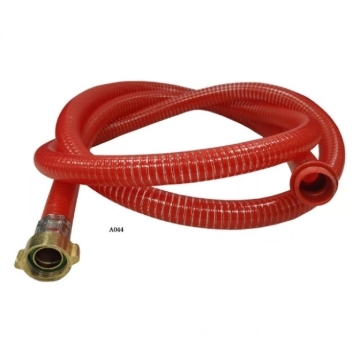Products tagged with 'spray'
DELTA BIDET SPRAY IN/W ARZO 1 LVR HDL.CHR-DT22900ARZO
DT222900ARZO
Contemporary Health Faucet with Hose and Bracket
₱3,125.00
POWER SPRAYER ACCESSORIES & PARTS - B52(GUN)
B52(GUN)
It consists of a piston type pump, a platform with fork, a lever to operate the pump, pressure chamber, suction hose with strainer, delivery hose, and a spray gun with flow control knob and nozzle.
₱395.00 ₱493.00
POWER SPRAYER ACCESSORIES & PARTS - A044(SUCTION HOSE)
A044(SUCTION HOSE)
The major components of a sprayer are tank, pump, agitator, flow control, and nozzles. Sprayer tank, wand, pump and gauge. Use synthetic rubber or plastic hoses that have a burst strength greater than peak operating pressures, resist oil and solvents present in pesticides, and are weather resistant. The main function of a sprayer is to break the liquid into droplets of effective size and distribute them uniformly over the surface or space to be protected. Another function is to regulate the amount of insecticide to avoid excessive application that might prove harmful or wasteful.Conversion of spray liquid into droplets is achieved using some form of energies. Various forms of kinetic energies such as hydraulic, gaseous and centrifugal are utilized in this process. The type of sprayer and nozzles or atomizers can be classified according to the energy used.
₱330.00 ₱412.00
Recently viewed products
-
WIRE STRIPPER /CUTTER FOR SOLID & STRANDED WIRE - 48-22-6109
-
Achievers Iced Tea With Stevia
-
1460 TOOL PELICAN PROTECTOR MOBILE TOOL CHEST
-
1560 LFC PELICAN PROTECTOR LAPTOP CASE
-
Satinique Straightening Balm
-
NILFISK VACUUM CLEANER DRY ONE WHITE 3L
-
Artistry Ideal Radiance Spot Corrector
-
NILFISK VIPER RIDE-ON SWEEPER - NFROS1300
-
G & H Nourish Body Wash
-
Artistry Intensive Skincare Renewing Peel
-
MORWELD Welding Tips for Welding & Cutting Outfit - HCW-W0
-
Nutriplant AG Plant Growth Enhancer
-
YALE CLASSIC SERIES HARDENED STEEL NATURAL SOLID BRASS
-
Artistry Intensive Skincare 14 Night Restore
-
Artistry Youth Xtend Rich Cleansing Foam
-
Artistry Hydra V Vital Skin Serum Concentrate
-
Artistry Youth Xtend Ultra Lifting Essence Concentrate
-
Artistry Youth Xtend Ultra Lifting Eye Serum Concentrate




























